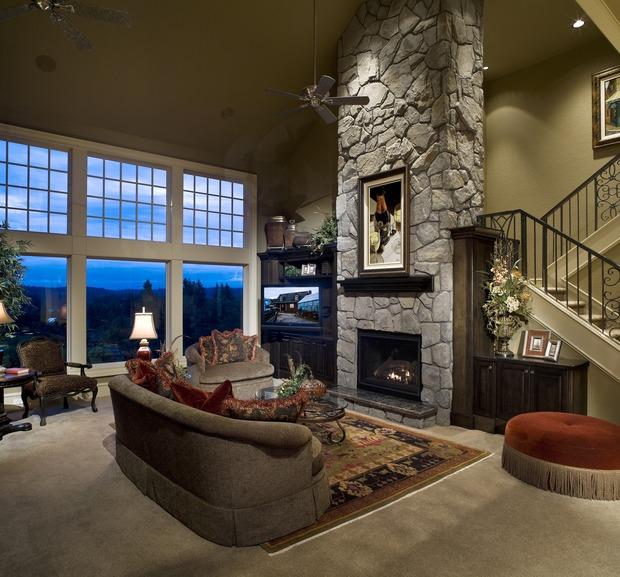
Your fireplaces and chimneys are more than just works of masonry – they’re a part of your home’s heating system. These areas work hard to exhaust fumes from your fireplace, furnace and water heater, so it’s important to maintain them properly.
Relatively minor but regular maintenance efforts can help your chimney operate safely for an indefinite period of time. A local fireplace contractor can help keep your fireplace and chimneys in tip-top shape.
Neglecting your chimney can lead to very expensive major repairs, as well as safety issues. The three most serious problems that result from poorly maintained chimneys are:
- Carbon monoxide poisoning
- Chimney fires
- Premature failure of the fireplace and chimney
Carbon Monoxide Poisoning
Carbon monoxide poisoning claims about 4,000 lives a year in the U.S., and a significant number of these deaths are the result of poorly maintained chimneys. In addition, about 10,000 people are made ill by lower levels of exposure to carbon monoxide.
Carbon monoxide is a by-product of combustion. The less complete the burning (combustion), the more carbon monoxide is generated. Gas hot water heaters, gas and oil furnaces, fireplaces, and wood stoves all generate carbon monoxide. You can protect yourself from carbon monoxide poisoning using a detector.
One of the reasons this gas is so deadly is that you generally can’t see or smell it: rarely do its victims have any warning. Low levels of poisoning tend to cause flu-like symptoms, so that people think they are just catching a cold. More advanced poisoning can cause vomiting and headaches and even death. Carbon monoxide is deadly because it tricks the body into thinking it is oxygen. The body actually prefers carbon monoxide, choosing it over oxygen when both are present in the atmosphere.
Once in the body, carbon monoxide goes everywhere in the body, including the brain. Children, in particular, are quite susceptible to brain damage after relatively low levels of exposure.
With chimneys, fireplaces and furnaces, most carbon monoxide problems occur because of improper exhausting of fumes. Such problems are almost entirely avoidable through regular professional fireplace & chimney inspection.
Fireplace Repair for a Cracked Wall
If you have a cracked wall and a zero-clearance fireplace, you should be able to replace the firewall. If you have a regular masonry fireplace, you could possibly add another layer of bricks or firewall material in front of the existing masonry, but that would reduce the size of the firebox and could cause drafting and smoke problems. Homeowners without a lot of experience in brick, stone, or concrete work should probably have a licensed masonry contractor come take a look and recommend the best course of action after a visual inspection.
Chimney Fires
Another major threat posed by inadequate maintenance is chimney fires. As fires burn, they generate smoke. As the smoke rises up the chimney, it comes into contact with the relatively cooler interior of the chimney (the flue), where some of the smoke condenses, like steam on a glass of cold water. The resulting condensed smoke is called creosote. Creosote is a black or brown gummy substance that builds up on the flue. Once a sufficient amount of creosote builds up, it can catch fire. The resulting chimney fire can range from being barely noticeable to being so dramatic that it sounds like a low flying jet.
The danger in chimney fires comes from the extremely high temperatures generated, which can severely damage the mortar in the chimney and even ignite nearby burnable surfaces. The first fire in a chimney may not even be noticed or, if noticed, may instill a false confidence in the owner (noticing that they had one chimney fire and seeing no harm done, they conclude that the hazard doesn’t apply to their circumstances).
In many cases, the first chimney fire can cause cracks and loosen mortar joints that then provide the next fire with an avenue to reach the roof timbers and other combustible materials.
Typically, chimney fires that spread to the rest of the house do so very quickly and consume the entire house before being brought under control. The high temperatures cause them to spread extremely fast, often trapping people in upper story bedrooms. Make sure to maintain your chimney and fireplace and take fire prevention measures to stay safe.
Chimney Failure
A third major danger from poorly maintained chimneys is failure of the basic structure itself. Chimney fires can damage the mortar joints and cause cracks that crumble further with continued “small” chimney fires.
Even before the second chimney fire has the opportunity to penetrate the cracks caused by the first, carbon monoxide can escape the chimney and leak into the living quarters of the home. Brain damage and death can occur before anyone has even noticed a problem, so be sure to check your monitors frequently.
Ready to start your Fireplace Inspection?
Find ProsChimney Inspection
As frightening and fierce as the potential fireplace and chimney hazards are, they are almost entirely preventable. The Chimney Safety Institute recommends that homeowners who light fires in their fireplaces three or more times a week during the heating season should hire a local chimney inspector and have the structure cleaned once per year.
If unseasoned wood is burned in the fireplace, twice-a-year cleaning and inspection may be necessary, because unseasoned wood usually burns at a lower temperature than seasoned wood, causing more smoke and therefore more creosote.
Some people assume that because they don’t have fires continuously during the winter, they don’t have to worry too much about creosote buildup. This may be far from the truth. The colder the flue, the greater the condensation, so creosote buildup is the greatest at the beginning of a fire, in the time before the flue has fully heated up.
The Chimney Safety Institute also recommends that if you use the chimney, wood stove, or free-standing fireplace less than three times a week, you should have the chimney inspected at least once a year and cleaned by local chimney sweep if necessary.
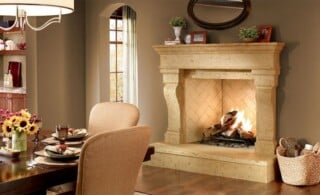 Turn Your Fireplace into a Work of Art with a Fireplace Surround
Turn Your Fireplace into a Work of Art with a Fireplace Surround 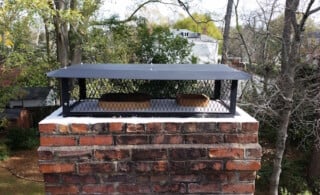 Preventive Maintenance: Chimneys
Preventive Maintenance: Chimneys 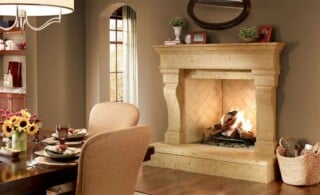 Chimney Bombs
Chimney Bombs 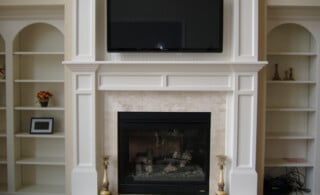 Stoking the Fire: Fireplace Remodels
Stoking the Fire: Fireplace Remodels 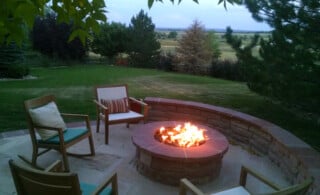 Enjoy Summer Nights with an Outdoor Fire Pit
Enjoy Summer Nights with an Outdoor Fire Pit 

This article does not mention whether all gas logs fireplaces also need inspections and cleaning. I need to know the answer,.
I have an opening for gas in my fireplace, but nothing attached to it like a pipe or cap. What has to make it safe?
I have the same question. A fake fireplace that is made of wood but plenty of room for a gas log. There used to be an old gas heater. I have gas but want to put a ventless gas logs in. Can I put a fire free substitute on the painted wood and set it down on a real oak floor. Thanks, Marilyn
My daughter is getting ready to purchase a house with a fire place with two cracks in the masonry in the fire wall. The seller has had a repair man come out and fill in the cracks with cement and says that should take care of the issue. My concern is this is just a patch work over a potential fire hazard if the fire wall is not replaced in the fire place. The house is a two story house with the bed rooms on the second floor. Should the fire wall be replaced or is patching the wall adequate?
Just moved into a flat there is a wood fire place which I don’t wish to use – I sense there is soot – is this dangerous? Am I inhaling any CO2.
Thanks